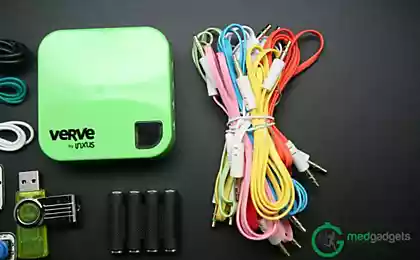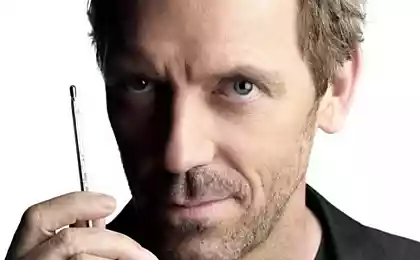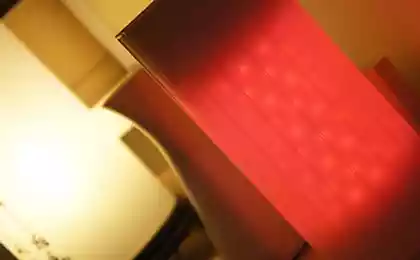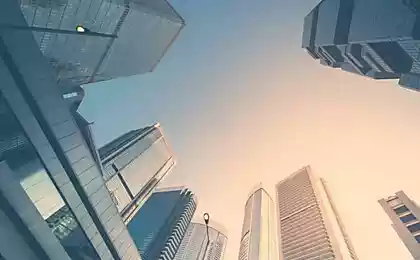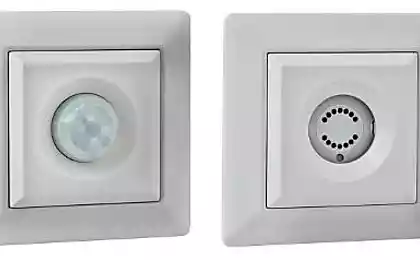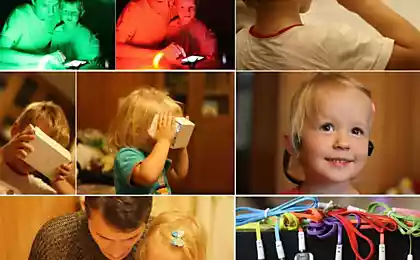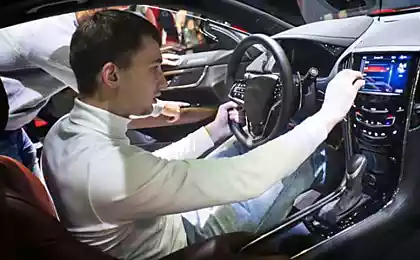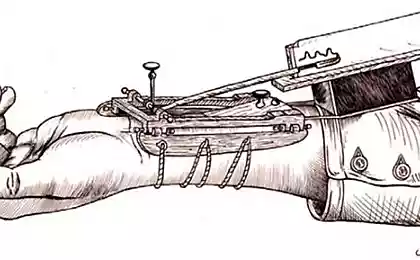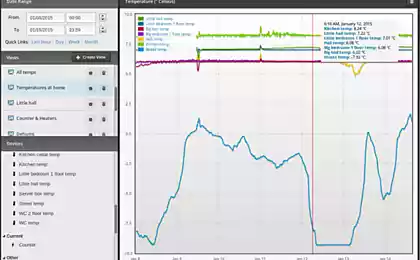701
Smart house: Development and trends
Convergence of information flows in the framework of three well-known services (data transmission, IP-TV and IP-telephony) is almost completed by providers of broadband Internet access. We see how the disparate services are being offered in the form of packets. The integrated product allows user to use the usual channels of information in the most common formats: video, image, sound and text.
It is easy to guess that such integration will continue to gain momentum. It can be argued that the telecommunication operators will provide services for the transmission of telemetry information, which at the hardware level between devices and devices of automation of everyday human actions in the framework of the project "smart house".
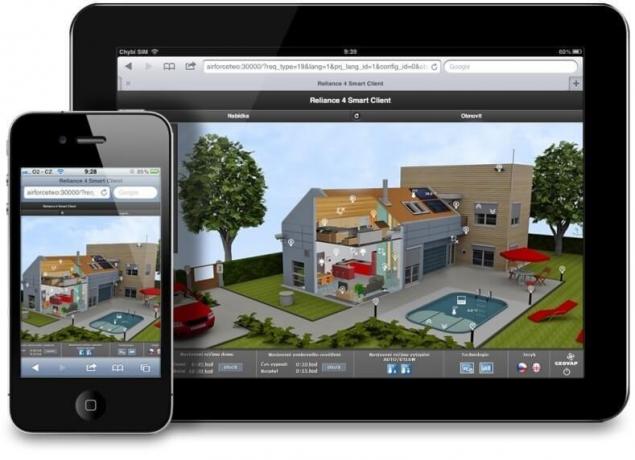
The smart house is one of the priority directions of development of the Internet of things (IoT), which operates a huge number of companies starting to actively include in their decision management functions consumerkey equipment and data exchange between devices.
There is no doubt that a great chance to win the Russian market of smart homes have the operators that provide communication services because they are able to provide a comprehensive approach to the organization of work: a channel of communication, special equipment and a decent level of service.
The probability of success of such companies is increasing due to the fact that these services (PayTV, mobile communication, broadband access to the Internet) people are already used regularly to pay. The service providers, when there is an audience willing to pay for a smart home as a unique service, added to an existing package, while the hardware sellers and security firms will have to first educate the market and attract first clients.
Among these companies-market participants and major mobile operators. The first M2M (Maspe-to-Machine) solutions from the "Beeline" from the category "Smart home" and "Smart office" for corporate clients and individuals appeared a few years ago.
It was an integrated M2M products, which consisted of a set of sensors (motion, door opening, smoke, button, alert light and sound indicator), combined with the Central control module, a special web – based interface allows the configuration and management system.
Mobile operator MTS in 2013 implemented a remote monitoring system of the apartment or country house to notify of accidents in the home, "Smart house – GSM camera". Set "Smart house" was managed by a special application for smartphones and tablets, and consisted of a camera with a motion sensor and the ability to receive calls, SIM card and wireless indicators opening doors and Windows, water leakage and smoke.
When the sensors are tripped, the system sends SMS alerts to the user given that he could at any time on their own to make a call the camera and listen to what is happening in the house, and request pictures of the home and the status of the sensors.
There are other companies that offer integrated solutions for the protection of the home, for example, "Caesar Satellite", offering satellite conservation estate. Its mobile app Cesar Guard for Android and iOS allows you to remotely manage and monitor what is happening at home in real time from anywhere in the world.
Such decisions, obviously, facilitate and protect our lives, because we can expect that with the development of technology will be gradual adaptation of smart homes on a large scale. Market participants argue that the volume of orders of such systems today is small, but still noticeable.
There are several reasons. The first is the General depreciation of automation and microprocessor technology. The first cell phones cost more than $3000 dollars, because they owned units – the smartphone is in almost every student or of the student. Equipping of buildings and facilities waiting the same story.
Second, there is a fixing of the most useful ideas and solutions at the legislative level, which contributes to their mass distribution. For example, today, building regulations require to implement the engineering systems that implement the mandatory algorithms for response in case of fire.
Thirdly, the extensibility and ease of use. Capacity and cost of the smart home depends on a user-selected number of features which he considered necessary. Fourthly, we note the extensibility and ease of use. Capacity and cost of the smart home depends on a user-selected number of features which he considered necessary.
Thus nobody forbids to purchase additional equipment: you start with a small number of components of the smart home, gradually increasing its capabilities and functionality of the smart home system is modular, easily extensible by adding new devices and sensors. With the centralised smart home control various components and systems home equipment is easy to connect yourself and to get to work in an orderly and agreed upon.
By pressing a single button on the control device starts the programmed sequence of actions, such as opening a gate, turning on the lighting in the yard and in the garage, etc.
Another reason for the proliferation of smart homes has been the emergence of smart home systems based on wireless technologies – that opened access to smart products new categories of consumers. The most popular was wired platform EIB/KNX (European Installation Bus — the "European installation bus"), Smart-bus (open Protocol based on RS-485 interface), X10 (the Protocol of control of appliances), but in recent years they bypass system based on wireless RF technologies, Bluetooth, WiFi, ZigBee and Z-wave.
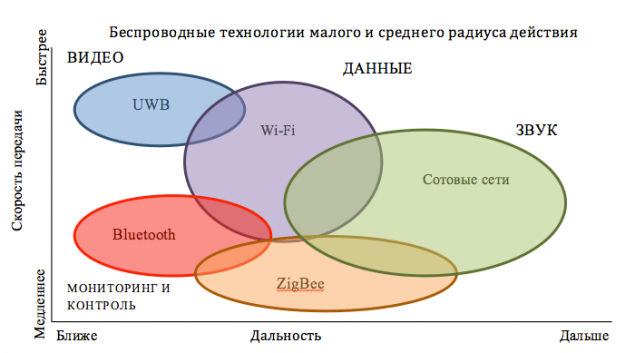
Supply of wireless equipment in Russia do as the world famous brands and new manufacturers. One of these young companies promoting budget wireless smart home system is SmartTone. The company is engaged in the development of controllers for remote control devices based on ZigBee technology.
Global network with low power consumption (LPWA) provide new opportunities for the use of M2M technology, when the costs of connection are expressed in dollars per year, not per month. LPWA networks are gaining wide consumer segments, such as modern healthcare, the tracking of cargo and people, housing, security and fire systems. Global networking technology with low power consumption opens new opportunities for the appearance "non-cellular" operators of global networks, offer unique services, such as monitoring with low energy consumption.
The popularization of the smart homeAt present, not only end users, but developers are not always aware of the usefulness of the implementation of management systems for smart home system. Experts believe that the concept of intelligent buildings is still not widely known and to disseminate it is required to use available channels to promote integration solutions.
Pedro de La Horra Calomarde (Pedro de la Horra Calomarde), Manager of the Eaton products for buildings, says that a good effect will work with designers, installation companies, architects, etc. the Theme of building automation new, few experts, architects and builders of the old school do not have full and clear information about it. This is confirmed by the representatives of Schneider Electric, noting that the promotion of smart home contributes to good word of mouth, especially among private customers.
Promotion can be considered a situation when the customer gets the experience of interacting with elements of smart homes and appreciating their convenience, begins to develop used system to each customer required its own approach.
Russian marketAccording to the IAA Rustelecom, the Russian market of smart home systems by the end of 2012 was estimated at about 4 billion rubles. The market of security services and response in the private sector, which already can be considered a forerunner of the market for integrated home automation, was estimated to be slightly greater amount of about 76 billion rubles.

The market in Russia is rather developed and large, so products and technologies appear almost simultaneously with the markets of Europe and North America. But the requirements of Russian users may differ significantly from the wishes of the Europeans, and the example of the smart home it is quite noticeable.
Experts note that the demand in the Old world of "green functions" are not popular in Russia, in the foreground we have security. It all started with the light sensor: the on/off functions, adjusting of sensors on different levels of light, changing the position of curtains depending on the state of artificial lighting and ambient light can provide a sense of presence in the house of the people.
Meanwhile, private security organizations offer to individuals and business users security and fire alarm systems that can be equipped with water leak sensors, gas, heat and others. These systems are easy to massturbate and (depending on the user needs) can be complemented by the various features of smart home. Furthermore, security agencies are actively implementing services that allow clients to manage the security of your home from smartphone from anywhere in the world.
However, the rapidly changing economic situation has forced to reconsider the attitude to what can offer your clients Russian operators in the framework of the concept of the smart home – the importance of energy saving is becoming more relevant for Russian consumers. This factor increases the demand for automated system control and resource management of utility services.
End user automated accounting system allows in terms of rising rates to optimize energy consumption, ensures data is accurate, which is the payment for the consumed services, increases comfort by informing and automatic resource management. So, homeowners gets the opportunity not only to see the current water consumption, but in the case of abnormal consumption, automatically shut it with a solenoid valve.
Market developmentmarket Development in different countries can be compared with the penetration of smart technologies in the homes of citizens.
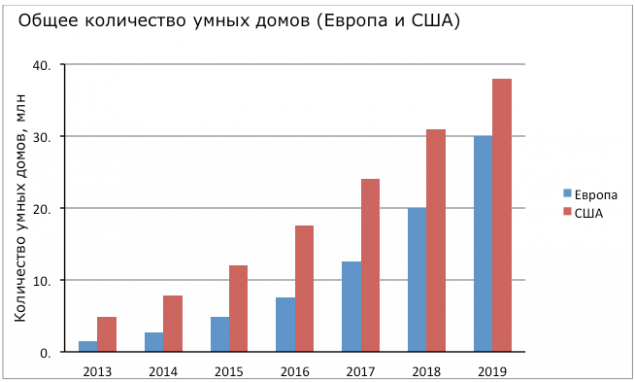
At the moment, slightly less than 10% of households in the United States and slightly less than 3% of households in Europe have installed a smart home system, whose number is expected to double or triple over the next few years.

The same penetration of smart technologies in the Russian house is less than 1% (0,7-0,9%). If we compare this figure with the Western, we are delayed for 3-5 years. However, there is every reason to believe that the market for smart homes of the Russian Federation will become popular and will begin to develop at an accelerated pace, since the smart home is comfort and safety, saving time and effort, saving energy and the family budget. published
P. S. And remember, only by changing their consumption — together we change the world! ©
Join us in Facebook , Vkontakte, Odnoklassniki
Source: geektimes.ru/company/gsgroup/blog/267176/
It is easy to guess that such integration will continue to gain momentum. It can be argued that the telecommunication operators will provide services for the transmission of telemetry information, which at the hardware level between devices and devices of automation of everyday human actions in the framework of the project "smart house".

The smart house is one of the priority directions of development of the Internet of things (IoT), which operates a huge number of companies starting to actively include in their decision management functions consumerkey equipment and data exchange between devices.
There is no doubt that a great chance to win the Russian market of smart homes have the operators that provide communication services because they are able to provide a comprehensive approach to the organization of work: a channel of communication, special equipment and a decent level of service.
The probability of success of such companies is increasing due to the fact that these services (PayTV, mobile communication, broadband access to the Internet) people are already used regularly to pay. The service providers, when there is an audience willing to pay for a smart home as a unique service, added to an existing package, while the hardware sellers and security firms will have to first educate the market and attract first clients.
Among these companies-market participants and major mobile operators. The first M2M (Maspe-to-Machine) solutions from the "Beeline" from the category "Smart home" and "Smart office" for corporate clients and individuals appeared a few years ago.
It was an integrated M2M products, which consisted of a set of sensors (motion, door opening, smoke, button, alert light and sound indicator), combined with the Central control module, a special web – based interface allows the configuration and management system.
Mobile operator MTS in 2013 implemented a remote monitoring system of the apartment or country house to notify of accidents in the home, "Smart house – GSM camera". Set "Smart house" was managed by a special application for smartphones and tablets, and consisted of a camera with a motion sensor and the ability to receive calls, SIM card and wireless indicators opening doors and Windows, water leakage and smoke.
When the sensors are tripped, the system sends SMS alerts to the user given that he could at any time on their own to make a call the camera and listen to what is happening in the house, and request pictures of the home and the status of the sensors.
There are other companies that offer integrated solutions for the protection of the home, for example, "Caesar Satellite", offering satellite conservation estate. Its mobile app Cesar Guard for Android and iOS allows you to remotely manage and monitor what is happening at home in real time from anywhere in the world.
Such decisions, obviously, facilitate and protect our lives, because we can expect that with the development of technology will be gradual adaptation of smart homes on a large scale. Market participants argue that the volume of orders of such systems today is small, but still noticeable.
There are several reasons. The first is the General depreciation of automation and microprocessor technology. The first cell phones cost more than $3000 dollars, because they owned units – the smartphone is in almost every student or of the student. Equipping of buildings and facilities waiting the same story.
Second, there is a fixing of the most useful ideas and solutions at the legislative level, which contributes to their mass distribution. For example, today, building regulations require to implement the engineering systems that implement the mandatory algorithms for response in case of fire.
Thirdly, the extensibility and ease of use. Capacity and cost of the smart home depends on a user-selected number of features which he considered necessary. Fourthly, we note the extensibility and ease of use. Capacity and cost of the smart home depends on a user-selected number of features which he considered necessary.
Thus nobody forbids to purchase additional equipment: you start with a small number of components of the smart home, gradually increasing its capabilities and functionality of the smart home system is modular, easily extensible by adding new devices and sensors. With the centralised smart home control various components and systems home equipment is easy to connect yourself and to get to work in an orderly and agreed upon.
By pressing a single button on the control device starts the programmed sequence of actions, such as opening a gate, turning on the lighting in the yard and in the garage, etc.
Another reason for the proliferation of smart homes has been the emergence of smart home systems based on wireless technologies – that opened access to smart products new categories of consumers. The most popular was wired platform EIB/KNX (European Installation Bus — the "European installation bus"), Smart-bus (open Protocol based on RS-485 interface), X10 (the Protocol of control of appliances), but in recent years they bypass system based on wireless RF technologies, Bluetooth, WiFi, ZigBee and Z-wave.

Supply of wireless equipment in Russia do as the world famous brands and new manufacturers. One of these young companies promoting budget wireless smart home system is SmartTone. The company is engaged in the development of controllers for remote control devices based on ZigBee technology.
Global network with low power consumption (LPWA) provide new opportunities for the use of M2M technology, when the costs of connection are expressed in dollars per year, not per month. LPWA networks are gaining wide consumer segments, such as modern healthcare, the tracking of cargo and people, housing, security and fire systems. Global networking technology with low power consumption opens new opportunities for the appearance "non-cellular" operators of global networks, offer unique services, such as monitoring with low energy consumption.
The popularization of the smart homeAt present, not only end users, but developers are not always aware of the usefulness of the implementation of management systems for smart home system. Experts believe that the concept of intelligent buildings is still not widely known and to disseminate it is required to use available channels to promote integration solutions.
Pedro de La Horra Calomarde (Pedro de la Horra Calomarde), Manager of the Eaton products for buildings, says that a good effect will work with designers, installation companies, architects, etc. the Theme of building automation new, few experts, architects and builders of the old school do not have full and clear information about it. This is confirmed by the representatives of Schneider Electric, noting that the promotion of smart home contributes to good word of mouth, especially among private customers.
Promotion can be considered a situation when the customer gets the experience of interacting with elements of smart homes and appreciating their convenience, begins to develop used system to each customer required its own approach.
Russian marketAccording to the IAA Rustelecom, the Russian market of smart home systems by the end of 2012 was estimated at about 4 billion rubles. The market of security services and response in the private sector, which already can be considered a forerunner of the market for integrated home automation, was estimated to be slightly greater amount of about 76 billion rubles.

The market in Russia is rather developed and large, so products and technologies appear almost simultaneously with the markets of Europe and North America. But the requirements of Russian users may differ significantly from the wishes of the Europeans, and the example of the smart home it is quite noticeable.
Experts note that the demand in the Old world of "green functions" are not popular in Russia, in the foreground we have security. It all started with the light sensor: the on/off functions, adjusting of sensors on different levels of light, changing the position of curtains depending on the state of artificial lighting and ambient light can provide a sense of presence in the house of the people.
Meanwhile, private security organizations offer to individuals and business users security and fire alarm systems that can be equipped with water leak sensors, gas, heat and others. These systems are easy to massturbate and (depending on the user needs) can be complemented by the various features of smart home. Furthermore, security agencies are actively implementing services that allow clients to manage the security of your home from smartphone from anywhere in the world.
However, the rapidly changing economic situation has forced to reconsider the attitude to what can offer your clients Russian operators in the framework of the concept of the smart home – the importance of energy saving is becoming more relevant for Russian consumers. This factor increases the demand for automated system control and resource management of utility services.
End user automated accounting system allows in terms of rising rates to optimize energy consumption, ensures data is accurate, which is the payment for the consumed services, increases comfort by informing and automatic resource management. So, homeowners gets the opportunity not only to see the current water consumption, but in the case of abnormal consumption, automatically shut it with a solenoid valve.
Market developmentmarket Development in different countries can be compared with the penetration of smart technologies in the homes of citizens.

At the moment, slightly less than 10% of households in the United States and slightly less than 3% of households in Europe have installed a smart home system, whose number is expected to double or triple over the next few years.

The same penetration of smart technologies in the Russian house is less than 1% (0,7-0,9%). If we compare this figure with the Western, we are delayed for 3-5 years. However, there is every reason to believe that the market for smart homes of the Russian Federation will become popular and will begin to develop at an accelerated pace, since the smart home is comfort and safety, saving time and effort, saving energy and the family budget. published
P. S. And remember, only by changing their consumption — together we change the world! ©
Join us in Facebook , Vkontakte, Odnoklassniki
Source: geektimes.ru/company/gsgroup/blog/267176/
